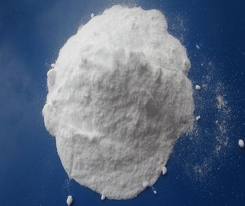Bioplastics – By: Dr. Aecio D’Silva, CEO, Moura Technologies and Dr. John Kyndt (Head Scientist of the Renewable Energy Program at MT – Advanced Energy Creations Lab).

Bioplastics – Can we produce widely used chemicals like plastics and nylon using biological raw material and thereby freeing us from dependence on fossil oil?
By using renewable plant or algal feedstocks we can possibly generate a sustainable source of bioplastics and bionylon.
As we have shown in past posts, syngas is the result of gasification, pyrolysis or plasma-lysis of biomass at high temperatures.
In the plasma process, biomass, waste of all kinds and any other product, including radioactive, are gasified directly into their basic molecular components of carbon and hydrogen.
In other words, turning them into a gas called syngas or synthetic gas. And all this with virtually zero emissions.
The true innovation is that in the presence of microbial or chemical catalysts, the syngas can then be converted into a vast array of chemicals (Bioplastics) and fuels.
Our group and several other research companies and private laboratories have concentrated their efforts on developing biochemical or microbial methods to generate valuable industrial chemicals such as 1, 4-butanediol (BDO) and adipic acid.
These are the building blocks that are consequently converted to bioplastics and bionylon. If one wants to produce these in a sustainable manner, you need renewable feedstocks of adipic acid and BDO.
Another alternative method, besides the syngas approach, is to genetically engineer certain metabolic pathways in microorganisms (yeast, bacteria) to create novel strains that can produce these chemicals in a cost effective manner directly from a biological feedstock.
The feedstock could be from any plant or algae that contain oils e.g. fatty acids that can be broken down into BDO or adipic acid. Even more cost effective is to use waste streams from e.g. vegetable oil or from cellulosic feedstocks.
Some of this engineering has been performed on a lab scale and early investors are currently funding the scale up to a pilot scales. These genetically modified microorganisms represents a major advance in the provision of industrial chemicals that were previously only produced from crude oil.
Bioplastics – 1,4-Butanediol (BDO)
1,4-butanediol (BDO) is an organic compound with the formula HOCH2CH2CH2CH2OH. This colorless, viscous butane gas is derived from the placement of alcohol groups at each end of the C4 chain. It is one of four stable isomers of butanediol.
BDO is used industrially as a solvent and is used in the manufacturing of some types of automotive plastics, elastic fibers, tennis and polyurethanes. Around 200 ° C, in the presence of soluble ruthenium catalysts, BDO undergoes dehydrogenation to form butyrolactone.
The world production of BDO is about one million tons per year thereby moving around a market of 3.0 billion dollars. Nearly half of BDO is dehydrated in tetrahydrofuran to make fibers such as Spandex. The largest producer is BASF.
Bioplastics – Adipic Acid
(Adipic Acid – Crystalline Powder White)
Adipic acid is the organic compound with the formula (CH2) 4 (COOH) 2. From an industrial point of view, it is the most important dicarboxylic acid. About 2.5 million tonnes of white crystalline powder are produced annually, mainly as a precursor for the production of nylon.
Adipic acid is a basic raw material for the production chains of polyamides, polyurethanes based ester plasticizers and chemical intermediates.
It has applications in polyurethane systems, organic synthesis, polymers and polyamide fibers, lubricants, plasticizers, adhesives, paints and resins, flexible and rigid foams, food and detergent applications. Basically 95% of your household materials may have an adipic acid origin.
Adipic acid reacts to hexamethylenediamine (HMD) forming the hexamethylenediamine adipate, also called nylon salt, a white crystalline salt and the first step of nylon manufacture.
Adipic acid rarely occurs in nature and currently has a market estimated at more than $ 5.2 billion dollars.
Bioplastics – High Value Chemical Intermediates
BDO and adipic acid are known as high-value “chemical intermediates” because they are the precursor chemicals needed to make other products and, thus far, both have been made on a commercial scale only in petrochemical refineries from fossil crude oil or natural gas.
Recently, companies have re-engineered (genetically modified) microorganisms to use (consume) the syngas as raw material to produce BDO and adipic acid in a sustainable way and out of dependence on oil.
As we saw earlier, the syngas can be produced using virtually any available biomass, litter, sanitary waste, forestry, sugar cane bagasse and other recyclable products such as used tires.
What is most important and significant is that the syngas is generally less expensive than other forms of renewable raw materials, and can be produced from a wide variety of raw materials, including biomass or municipal solid waste garbage.
That is, the industrial use of sustainable technology provides platforms for chemical and biological production of chemicals and other high value on the market and a much lower cost.
The challenge is to move from experiments in laboratories to pilot plants to install and achieve large-scale production. We hope that very soon we can have not only adipic acid and BDO but also many other chemicals that are currently based on oil, being produced by a microbial sustainable path.
Source: BioPlásticos: Syngas como Matéria-Prima na Produção Sustentável de BioNylon



Chemicals (and for that bioplastics) are also interesting markets for future use of algae!